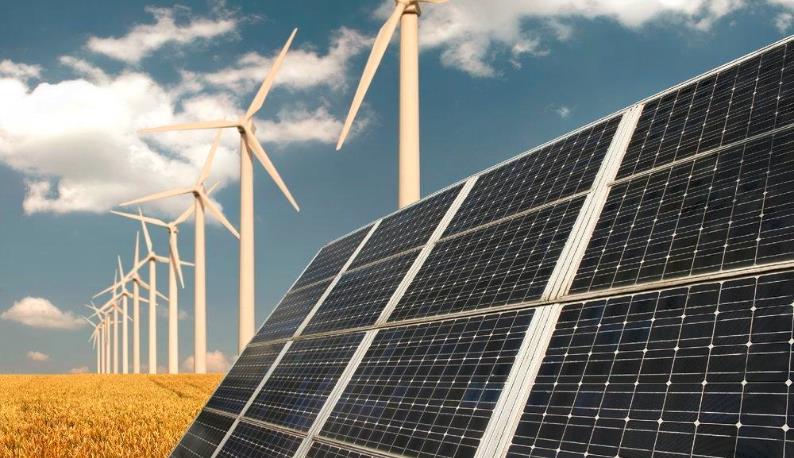
The significance of developing a renewable-energy power system is directly associated with addressing climate change issues around the globe. The consequences of climate change have economic implications, which impact diverse sectors and regions. As global temperatures continue to rise and extreme weather events become more prevalent, crucial elements like agricultural productivity, water resources and supply chains are directly affected.
Through a shift toward clean energy sources and moving away from fossil fuels, there can be a significant reduction in greenhouse gas (GHG) emissions. Stakeholders have started to believe in a future where renewable energy takes the lead and guarantees not only sustainability and resilience but also prosperity for generations to come.
There is a need for cities to prioritize the planning of their power systems to ensure a sustainable future in the fight against climate change, emissions reduction and the promotion of environmental responsibility. One city that has taken significant steps in this direction is Los Angeles.
This article explores a report by the Los Angeles Department of Water and Power, in partnership with the National Renewable Energy Laboratory (NREL), which outlines an ambitious plan to achieve a fully renewable-energy power system by 2045. The report comprehensively addresses various factors that must be considered to accomplish this objective.
What is the LA100 project?

The Los Angeles 100% Renewable Energy Study (LA100) was conducted to assist city stakeholders in establishing long-term policy objectives through a thorough understanding of feasibility and cost benefits.
The report primarily focuses on the considerations necessary to achieve 100% renewable energy, excluding biofuels, by 2030, as well as the associated costs and GHG emissions, while minimizing the expenses of deep decarbonization. It is important to note that the report does not make definitive predictions about future outcomes; rather, it offers policy recommendations aimed at aiding the city in attaining its goal.
The study aims to provide insights into various aspects related to the transition toward a renewable-energy future. It addresses key concerns around potential shifts in electricity demand, the necessary upgrades to grid infrastructure and the reliability of renewable technologies during extreme events.
Assessment of electricity demand in the future
The assessment of customer choices and their impact on electricity demand is a crucial aspect of the LA100.
The moderate projection takes into account improvements in energy efficiency, both above the standard code requirements, and moderate growth in electricity demand. This growth is primarily driven by the increasing adoption of electric vehicles and electric-powered consumer products like stoves.
It is important to note that while the moderate projection indicates the least change in electricity demand compared with the present scenario, it should not be mistaken for “business as usual.” Instead, it envisions significant shifts in consumer behavior and technological advancements.
The forecasts show that approximately 1 million light-duty EVs will be on the roads of Los Angeles by 2045. Additionally, there will be greater utilization of electric and heat-pump technologies in the building sector, highlighting the city’s commitment to sustainable-energy practices.

Does EV charging infrastructure respond to electricity demand?
To optimize the supply of electricity to meet future demand, the report explores various strategies. Among these strategies, one approach involves establishing solar charging (EVs) at workplaces. By encouraging the adoption of workplace charging and providing incentives for its utilization, EV charging can be synchronized with peak solar energy generation. This helps in reducing the strain on the grid during periods of high electricity demand.
While the potential of demand response is evident, the exact extent to which it can be achieved remains highly uncertain. There are various factors that contribute to this uncertainty, including infrastructure buildout, the precise technical capabilities required, and human behavior and preferences.
How did LA100 model GHG emissions?
Within the LA100 study, the assessment of GHG emissions in the power sector was conducted, with a focus on two scopes: combustion-only CO2 emissions and lifecycle GHG emissions.
NREL calculated the lifecycle GHG emissions associated with electricity generation in the LA100 study. These lifecycle emissions include CO2 along with other greenhouse gases, such as methane, nitrous oxide and sulfur hexafluoride.
In addition to analyzing emissions from the power sector, the study also considers emissions from non-power sectors. This includes residential, commercial and transportation sectors, such as emissions from buildings and vehicles. By doing this, the report provides a comprehensive understanding of the overall GHG emissions associated with the energy system in Los Angeles.
These findings can inform decision-makers and stakeholders in developing strategies and policies that effectively reduce GHG emissions and mitigate climate change in the pursuit of a more sustainable and environmentally friendly energy landscape in Los Angeles.
Key insights from the LA100 report
A significant insight from the study is the anticipated substantial growth in rooftop solar installations. It is estimated that the city will have a rooftop solar-generation capacity of about 3–4 GW by the end of 2045.
The Los Angeles Department of Water and Power may also deploy an additional 300-1,000 MW of non-rooftop, in-basin solar installations. These solar energy sources will play a crucial role in meeting the rising electricity demand and transitioning toward a cleaner and more sustainable energy mix.
The study also highlights the positive impacts of the overall electrification of vehicles and buildings on air quality and public health. By reducing reliance on fossil fuels and transitioning to EVs and buildings, the city can experience significant improvements in air quality, leading to numerous associated health benefits for its residents.
About US
Heisener Electronic is a famous international One Stop Purchasing Service Provider of Electronic Components. Based on the concept of Customer-orientation and Innovation, a good process control system, professional management team, advanced inventory management technology, we can provide one-stop electronic component supporting services that Heisener is the preferred partner for all the enterprises and research institutions.
